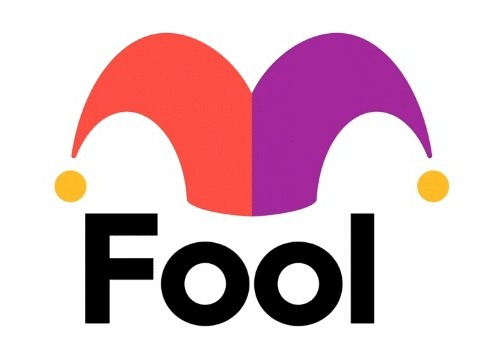For tens of millions of retired Americans, Social Security provides an indispensable source of income. Although the average monthly retired-worker check in 2025 is a modest $1,976, more than two decades of annual surveys from Gallup have found that Social Security is needed by 80% to 90% of retirees to cover their expenses.
Considering how important Social Security income is to the financial well-being of our nation’s aging workforce, you’d think this program was on rock-solid footing — but this couldn’t be further from the truth.
Start Your Mornings Smarter! Wake up with Breakfast news in your inbox every market day. Sign Up For Free »
A confluence of factors is responsible for Social Security’s worsening financial outlook, including America’s widening income gap for workers.

Image source: Getty Images.
Social Security’s 75-year cash shortfall has topped $23 trillion
For the last 85 years, the Social Security Board of Trustees has published an annual report detailing every dollar in income collected for the program, along with the destination of every dollar spent.
Additionally, the Trustees Report makes assumptions about the future financial health of the program by taking into account changes in fiscal and monetary policy, as well as demographic shifts. It’s these statistical long-term assumptions — “long term” being the 75 years following the publishing of a Trustees Report — which have progressively worsened over the last four decades.
The 2024 Trustees Report estimated the program’s long-term unfunded obligation shortfall to be $23.2 trillion, which is up $800 billion from the 2023 report. To be transparent, this doesn’t mean Social Security is in danger of going bankrupt or failing to pay benefits in the future. But what it does signal is that the existing payout schedule, inclusive of annual cost-of-living adjustments (COLAs), isn’t sustainable.
The more immediate issue for Social Security is the expected depletion of the Old-Age and Survivors Insurance (OASI) Trust Fund’s asset reserves by 2033. If the OASI were to exhaust the $2.64 trillion in excess cash built up since inception over the next eight years, retired workers and survivor beneficiaries could see their Social Security checks slashed by up to 21%.
The reason Social Security finds itself in a $23.2 trillion (and growing) funding deficit has nothing to do with popular (but untrue) online myths of “congressional theft” and “undocumented migrants receiving benefits.” Rather, it’s a reflection of ongoing demographic shifts, such as a record-low U.S. birth rate, a 58% decline in net legal migration over 25 years, and rising income inequality.
The OASI’s asset reserves are projected to run out by 2033. US Old-Age and Survivors Insurance Trust Fund Assets at End of Year data by YCharts.
The rich get richer, to Social Security’s detriment
The reason Social Security can’t go bankrupt or become insolvent is its primary source of funding: the 12.4% payroll tax on earned income. “Earned income” includes wages and salary, but not investment income. As long as Americans continue to work and pay their taxes, eligible Social Security beneficiaries will receive a monthly check.
In 2025, all earned income from $0.01 through $176,100 is subject to the payroll tax. People who are self-employed cover the full 12.4% payroll tax up to the maximum taxable earnings amount (the $176,100 figure). In comparison, workers split their liability 50-50 with their employer (6.2% each).
Based on data from the Social Security Administration’s (SSA’s) 2024 Fast Facts & Figures report, approximately 94% of working Americans earned less than the taxable earnings cap in 2023. Put another way, an overwhelming majority of workers are funding America’s leading retirement program with every dollar in earned income they generate.
On the other end of the spectrum, around 6% of workers exceeded that maximum taxable earnings figure in 2023. Every dollar in wages and salary they generate above this threshold is exempt from the payroll tax.
In an ideal world for Social Security, annual increases for the taxable earnings cap would perfectly match the average growth in wages and salaries for high earners. However, decades of taxable earnings history show this isn’t the case.
In 1983, around 90% of earned income was subject to the payroll tax. But as of 2023, the SSA’s Fast Facts & Figures report said that only 83% of earned income is being subject to this tax. In short, wages and salary for high earners have been growing at a consistently faster pace than the National Average Wage Index, which is the tool that dictates how much the taxable earnings cap rises on an annual basis.
An argument can be made that this widening wealth gap is “cheating” Social Security out of much-needed income.

Image source: Getty Images.
Taxing the rich isn’t the cut-and-dried solution it’s often made out to be
The knee-jerk reaction to more earned income escaping the payroll tax is to increase what high earners are paying into Social Security. This is an especially appealing route to take considering the program’s widening cash shortfall, and the fact that 94% of workers wouldn’t be affected by raising or eliminating the maximum taxable earnings figure.
Both President Joe Biden and 2024 Democratic Party presidential nominee Kamala Harris supported reinstating the payroll tax for high earners in order to collect additional income.
However, taxing the 6% of Americans who earn more than the taxable earnings cap isn’t the cut-and-dried solution it’s suggested to be.
The silver lining of increasing payroll taxation on high earners is that it would immediately boost income for the program and remove concerns about sweeping benefit cuts taking place in 2033.
On the other hand, a previous analysis by the SSA’s Office of the Chief Actuary estimated that completely removing the taxable earnings cap and exposing all earned income to the payroll tax would only extend the solvency of the trust funds by “about 35 years.” Put another way, taxing the rich by itself doesn’t come anywhere close to resolving Social Security’s long-term cash shortfall.
Another potential problem with increasing payroll taxation on high earners is the expectation that they’ll make moves to reduce their tax liability. This might include retiring earlier, working fewer hours, or shifting income streams to ones that aren’t subject to the payroll tax.
Something else to consider is that high earners are, arguably, already paying their fair share into the system. Just as there’s a cap to how much earned income can be exposed to the payroll tax, Social Security also limits how much retired workers can collect at full retirement age ($4,018 per month in 2025).
Lastly, increasing the payroll tax on high earners would require 60 votes to amend the Social Security Act in the Senate. With Republicans controlling the Senate and adamantly opposed to increasing taxation on high earners, proposals to “tax the rich” are virtually guaranteed to be dead on arrival.
The $22,924 Social Security bonus most retirees completely overlook
If you’re like most Americans, you’re a few years (or more) behind on your retirement savings. But a handful of little-known “Social Security secrets” could help ensure a boost in your retirement income. For example: one easy trick could pay you as much as $22,924 more… each year! Once you learn how to maximize your Social Security benefits, we think you could retire confidently with the peace of mind we’re all after. Simply click here to discover how to learn more about these strategies.
View the “Social Security secrets” »
The Motley Fool has a disclosure policy.
 benzinga.com
benzinga.com fool.com
fool.com




